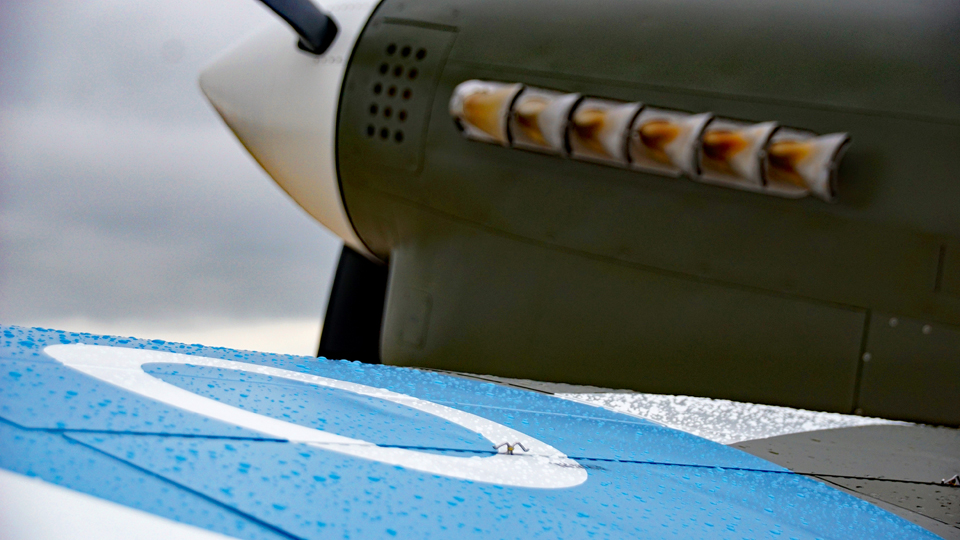Kiwi Kittyhawk With the Killer Looks
By Frederick A. Johnsen
A Curtiss P-40M Kittyhawk that served with the Royal New Zealand Air Force (RNZAF) during World War II flew to AirVenture 2016 in a spotless rendition of its wartime glory. The pride of Paul Redlich and the restoration team from the Tri-State Warbird Museum, Batavia, Ohio, this P-40 is the product of many years of restoration punctuated by an engine failure that led to even more work.
Redlich’s team learned of the P-40M more than 10 years ago. It was found in the 1960s in a New Zealand scrapyard with its one-piece wing sawed off outboard of the landing gear and its Allison engine cut off at the mounts. Restoration began. The museum bought it and returned it to the United States where restoration continued in 2006. By February 2011, the Kittyhawk was flying, when a piston rod punctured the Allison block. A dead-stick landing at the airport caused some damage, and the team went back to work.
Their attention to detail encompasses the type of screws Curtiss employed to hold nonstructural parts on the airframe. The plans call for a cross-head Reed-Prince Pearson screw. When none could be found, they had thousands custom machined. The exact geometry of the Curtiss-specific screws was followed for the last detail in authenticity. “We’re not going to take any guesses” in the restoration process of warbirds, Redlich promised. On the P-40, they reviewed hundreds of photos and documents depicting RNZAF P-40s and their markings before painting the M model.
Mike Durkee is a restoration technician for the museum who helps show the P-40M at AirVenture. He points out the aircraft’s three Curtiss Electric propeller blades. The Curtiss decals on the blades look old. That’s because they are; these are NOS — new old stock — prop blades that still carry 70-year-old decals. Elsewhere, the team from Batavia commissioned the manufacture of new-made decals to old Curtiss specifications to apply data and instructional information to the airframe just the way Curtiss would have done it in 1943.
The instrument panel and cockpit furnishings are all old school, including the working vintage radios. One concession to modernity is a small transponder and comm radio hidden inside the fighter’s map case on the right cockpit wall. No modern radios or square glass instruments intrude in the cockpit.
Although the .50-caliber machine guns in the wings of this P-40 are inoperable replicas, Durkee said when “you pull the trigger, the gun solenoids click.” Modern insulated wiring is used throughout the airframe, but the restoration team found a company that could replicate the original color-coded cotton wire covering to apply over the modern stuff for appearances.
Durkee said the available imagery of World War II RNZAF P-40s shows they were equipped with smooth treadless tires. In today’s world, these weren’t available, so “we had to buy treaded tires and shave them.”
The P-40 was a triumph of engineering and production for Curtiss during World War II. Though ultimately bested in some performance parameters by later fighters, the P-40 proved capable in air-to-air combat when properly flown to take advantage of its diving speed. Its ground attack efforts were bolstered by a general sturdiness.


